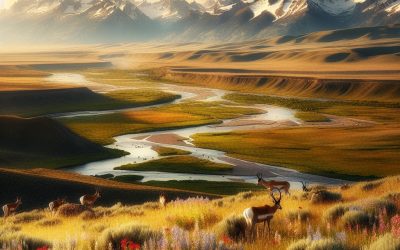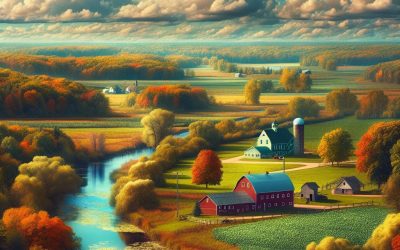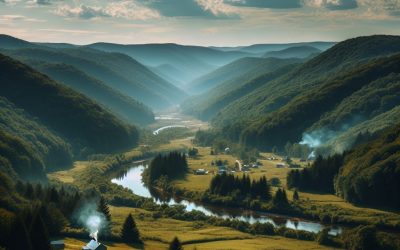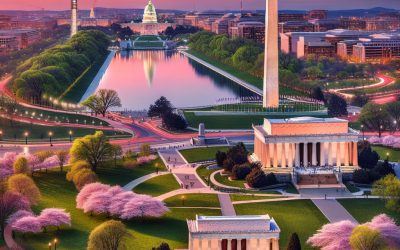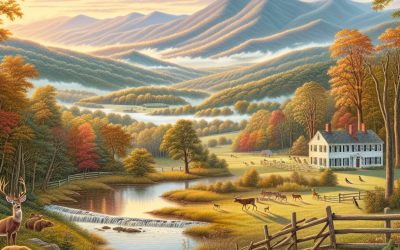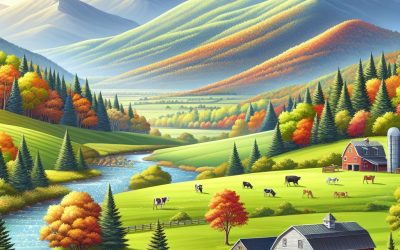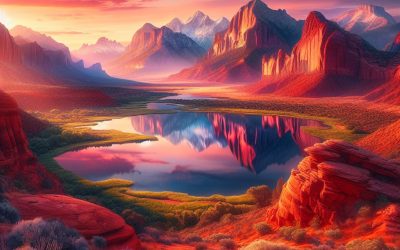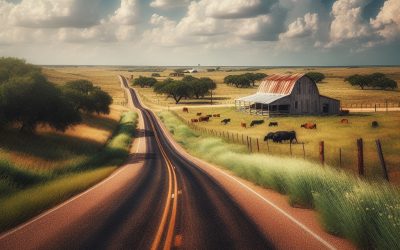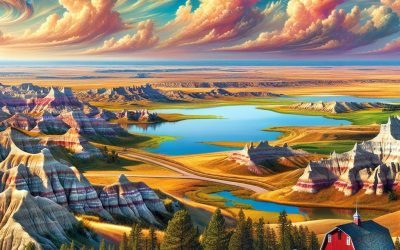World Geography
Geography is the study of the Earth’s landscapes, environments, and the relationships between people and their surroundings. It encompasses both the physical aspects of the Earth, such as its landforms, bodies of water, and climate, as well as the human aspects, including population distribution, cultures, and economies. World geography is a broad field that seeks to understand the complexities of our planet and how humans interact with it. By studying world geography, we can gain a deeper appreciation for the diversity of our planet and the interconnectedness of its various regions.
Geography is a multidisciplinary field that draws on elements of physical science, social science, and humanities. It involves the use of maps, spatial analysis, and geographic information systems (GIS) to understand the Earth’s surface and the processes that shape it. World geography also encompasses the study of human geography, which examines the ways in which people and their activities are distributed across the Earth. By understanding world geography, we can better appreciate the environmental, cultural, and economic challenges facing different regions of the world. This knowledge is crucial for addressing global issues such as climate change, resource management, and international development.
The Five Oceans and Seven Continents
The Earth’s surface is divided into five major oceans: the Pacific, Atlantic, Indian, Southern (or Antarctic), and Arctic Oceans. These vast bodies of water play a crucial role in regulating the Earth’s climate and supporting diverse marine ecosystems. The oceans also serve as important transportation routes and a source of food and other natural resources for human societies around the world.
In addition to the oceans, the Earth’s landmasses are divided into seven continents: Africa, Antarctica, Asia, Europe, North America, Australia (or Oceania), and South America. Each continent has its own unique physical and cultural characteristics, shaped by millions of years of geological processes and human history. From the deserts of Africa to the rainforests of South America, the continents offer a rich tapestry of landscapes and environments for exploration and study.
Major Mountain Ranges and Deserts
The Earth’s surface is also marked by major mountain ranges and deserts that have shaped the planet’s physical and cultural landscapes. The Himalayas, for example, are the highest mountain range in the world and are home to diverse ecosystems and cultures in countries such as India, Nepal, and Bhutan. The Andes in South America, the Rockies in North America, and the Alps in Europe are other prominent mountain ranges that have influenced human settlement patterns and economic activities.
Deserts cover about one-third of the Earth’s land surface and are characterized by low precipitation and extreme temperatures. The Sahara Desert in Africa is the largest hot desert in the world, while the Gobi Desert in Asia is one of the largest cold deserts. Deserts are not only home to unique flora and fauna but have also been important trade routes and cultural crossroads throughout history.
Climate Zones and Biomes
The Earth’s climate is influenced by a variety of factors, including latitude, altitude, ocean currents, and prevailing winds. As a result, the planet is divided into different climate zones, each with its own characteristic weather patterns and ecosystems. The equator, for example, experiences a tropical climate with high temperatures and heavy rainfall, while the polar regions have a cold and dry climate.
These climate zones give rise to different biomes, or large ecological areas characterized by distinct plant and animal communities. The tropical rainforest biome, found near the equator, is home to a diverse array of species and is vital for regulating the Earth’s climate. The grasslands biome, found in regions such as the African savannah and North American prairies, supports grazing animals and has been important for human agriculture throughout history.
Human Geography and Population Distribution
Human geography examines the ways in which people and their activities are distributed across the Earth’s surface. It encompasses topics such as population growth, migration patterns, urbanization, and cultural diversity. Understanding human geography is crucial for addressing global challenges such as poverty, inequality, and environmental degradation.
Population distribution is uneven across the world, with some regions experiencing rapid population growth while others are declining. The majority of the world’s population lives in Asia, particularly in countries such as China and India. Urban areas are also growing rapidly, with more than half of the world’s population now living in cities. This trend has significant implications for infrastructure development, resource management, and social inequality.
Historical and Cultural Geography
Historical geography examines how human activities have shaped the Earth’s landscapes over time. It explores topics such as colonialism, trade routes, and the rise and fall of empires. Cultural geography focuses on how human cultures have developed in different regions of the world and how they interact with their environments.
The Silk Road, for example, was an ancient trade route that connected China with Europe and facilitated the exchange of goods, ideas, and technologies across Eurasia. This historical trade route had a profound impact on the development of cultures and economies along its path. Similarly, cultural geographers study how different societies have adapted to their environments through practices such as agriculture, architecture, and religious beliefs.
The Importance of Geographic Knowledge
Geographic knowledge is crucial for addressing global challenges such as climate change, resource management, and international development. By understanding world geography, we can better appreciate the environmental, cultural, and economic challenges facing different regions of the world. This knowledge is crucial for addressing global issues such as climate change, resource management, and international development.
Geographic knowledge also helps us to understand our interconnectedness with other regions of the world. By studying world geography, we can gain a deeper appreciation for the diversity of our planet and the interconnectedness of its various regions. This understanding can foster a sense of global citizenship and empathy for people from different cultures and backgrounds.
In conclusion, world geography is a complex and multifaceted field that encompasses both physical and human aspects of the Earth’s landscapes. By studying world geography, we can gain a deeper appreciation for the diversity of our planet and the interconnectedness of its various regions. This knowledge is crucial for addressing global challenges such as climate change, resource management, and international development. It also helps us to understand our interconnectedness with other regions of the world and fosters a sense of global citizenship.
FAQs
What is world geography?
World geography is the study of the Earth’s landscapes, environments, and the relationships between people and their environments. It encompasses the physical features of the Earth, as well as the human activity that takes place on it.
Why is world geography important?
World geography is important because it helps us understand the world around us. It provides insights into the physical and human processes that shape our planet, and helps us make informed decisions about how to interact with our environment.
What are the main branches of world geography?
The main branches of world geography include physical geography, which focuses on the Earth’s natural features and processes, and human geography, which examines the relationships between people and their environments.
How does world geography impact our daily lives?
World geography impacts our daily lives in numerous ways, from influencing the weather and climate we experience, to shaping the availability of natural resources and influencing the distribution of populations and cultures around the world.
What are some key concepts in world geography?
Key concepts in world geography include location, place, human-environment interaction, movement, and region. These concepts help geographers understand and interpret the world around them.
Eastbourne – East Sussex
Eastbourne is a charming seaside town located on the south coast of England in East Sussex. With its beautiful beaches, stunning gardens, and rich history, it is a popular destination for tourists and locals alike. The town is known for its Victorian architecture, vibrant cultural scene, and outdoor activities. With a population of around 100,000 people, Eastbourne offers a mix of traditional seaside charm and modern amenities. Summary Eastbourne is a charming seaside town located in East Sussex. The town has a rich history, from its origins as a fishing village to its development as a popular Victorian resort. Visitors can enjoy a variety of attractions, including beaches, gardens, and cultural sites. Outdoor enthusiasts can take advantage of hiking, cycling, and watersports opportunities. Eastbourne also offers a range of shopping and dining options, as well as accommodation choices to suit all budgets. History of Eastbourne – From Fishing Village to Victorian Resort Eastbourne has a long and fascinating history that dates back to Roman times. Originally a small fishing village, it began to grow in the 19th century when it became a popular resort town for wealthy Victorians. The town’s development was further accelerated by the arrival of the railway in the mid-19th century, which made it more accessible to visitors from London. During World War II, Eastbourne was heavily bombed due to its proximity to the English Channel and its importance as a military target. Many buildings were destroyed or damaged, but the town managed to rebuild and recover in the post-war years. Today, remnants of the war can still be seen in some areas of Eastbourne,...
Brighton & Hove (Unitary Authority) – technically part of East Sussex
Brighton & Hove, located on the south coast of England, is a vibrant and diverse city that offers something for everyone. With its stunning beaches, lively arts scene, and rich history, it has become a popular destination for tourists and locals alike. Whether you’re looking to relax on the beach, explore the city’s cultural offerings, or indulge in its gastronomic delights, Brighton & Hove has it all. The city is known for its unique and bohemian atmosphere, attracting artists, musicians, and free spirits from all over the world. It has a reputation for being a place where creativity thrives and individuality is celebrated. From the iconic Brighton Pier to the bustling North Laine district, there is always something exciting happening in this vibrant coastal city. Summary Brighton & Hove is a vibrant coastal city with a rich history and thriving culture. From a fishing village to a tourist hotspot, Brighton & Hove has a fascinating past. The city is a creative hub with a thriving arts scene and many cultural attractions. Visitors can enjoy the beaches, pier, and other attractions in Brighton & Hove. The food and drink scene in Brighton & Hove is a gastronomic delight with many options to choose from. History of Brighton & Hove: From Fishing Village to Tourist Hotspot Brighton & Hove has a rich history that dates back centuries. Originally a small fishing village called Brighthelmstone, it began to grow in popularity as a seaside resort in the 18th century. The arrival of the railway in the 1840s further boosted its popularity, making it easily accessible to visitors from London and other parts...
State Of Wyoming
Wyoming, also known as the Equality State, is a landlocked state located in the western United States. It is the 10th largest state in terms of land area, but has the lowest population density in the country. The nickname “Equality State” was given to Wyoming because it was the first state to grant women the right to vote in 1869. The state motto, “Equal Rights,” further emphasizes Wyoming’s commitment to equality and justice. Wyoming holds great importance in American history. It played a significant role in the expansion and settlement of the American West. The state’s vast open spaces and natural resources attracted pioneers and settlers looking for new opportunities. Wyoming was also a key location during the era of cowboys and cattle drives, which has become an iconic part of American history and culture. Summary Wyoming is known as The Equality State due to its early adoption of women’s suffrage. Wyoming’s history includes a wild west past and becoming the 44th state in the US in 1890. The state’s geography includes both the Great Plains and the Rocky Mountains, offering diverse landscapes. Wyoming is home to a variety of wildlife, including bison, grizzly bears, and wolves. The state’s economy is heavily reliant on agriculture, mining, and energy industries. History of Wyoming: From Wild West to Statehood Before European exploration and settlement, Wyoming was home to various Native American tribes, including the Shoshone, Arapaho, Cheyenne, and Crow. These tribes lived off the land, hunting buffalo and other wildlife, and had a deep connection to the natural environment. European exploration of Wyoming began in the early 1800s with fur...
State of Wisconsin
Wisconsin, also known as the Badger State, is a state located in the Midwest region of the United States. It is bordered by Lake Superior and Michigan to the north, Lake Michigan to the east, Illinois to the south, and Iowa and Minnesota to the west. The state’s nickname, the Badger State, comes from the lead miners who first settled in the region in the early 19th century. These miners were known for living in temporary shelters called “badger holes,” which resembled the burrows of badgers. Wisconsin holds great importance in the United States for several reasons. Firstly, it is known for its rich history and contributions to American culture and politics. Secondly, it is home to several major industries, including agriculture, manufacturing, and tourism. Lastly, Wisconsin is renowned for its natural beauty, with numerous parks, lakes, and forests that attract visitors from all over the world. Summary Wisconsin is known as the Badger State due to early miners who lived in tunnels like badgers. Wisconsin has a diverse geography and climate, ranging from forests to farmland and from cold winters to hot summers. Wisconsin’s history includes Native American settlements, French and British colonization, and statehood in 1848. Wisconsin’s economy is driven by agriculture, manufacturing, and tourism, with cheese and beer being notable exports. Wisconsin is home to top universities like the University of Wisconsin-Madison and Marquette University. Geography and Climate of Wisconsin Wisconsin is located in the Midwest region of the United States and is bordered by Lake Superior to the north, Lake Michigan to the east, Illinois to the south, and Iowa and Minnesota to the...
State of West Virginia
West Virginia, located in the Appalachian region of the United States, is a state known for its natural beauty and rich history. It became a state in 1863 during the American Civil War and is often referred to as the “Mountain State” due to its stunning mountainous landscape. West Virginia is bordered by Pennsylvania to the north, Ohio to the northwest, Kentucky to the southwest, Virginia to the southeast, and Maryland to the northeast. The state is home to a diverse population with a unique culture that is influenced by Native American, African American, and European traditions. West Virginia’s natural beauty is one of its biggest attractions, with its rolling hills, lush forests, and picturesque rivers. The state is also known for its outdoor recreational activities such as hiking, camping, whitewater rafting, and skiing. Summary West Virginia is a state of natural beauty and rich history. The unique geography and climate of West Virginia make it a fascinating place to explore. West Virginia’s cultural heritage and traditions are worth discovering. The state offers great outdoor activities like hiking, camping, and adventure sports. West Virginia has a rich mining and industrial history, from coal to chemicals. Discovering West Virginia’s Unique Geography and Climate West Virginia’s geography is characterized by its diverse landscape, which includes mountains, rivers, and forests. The Appalachian Mountains run through the state, providing breathtaking views and opportunities for outdoor activities such as hiking and rock climbing. The state is also home to several national parks and forests, including the Monongahela National Forest and the New River Gorge National Park. West Virginia can be divided into several...
Washington State
Search Results Washington, also known as the Evergreen State, is located in the Pacific Northwest region of the United States. It is bordered by Oregon to the south, Idaho to the east, and Canada to the north. With a population of over 7 million people, Washington is the 13th most populous state in the country. The state’s nickname, the Evergreen State, comes from its lush green forests that cover a significant portion of its land. Summary Washington is known as the Evergreen State due to its lush forests and greenery. The state has a rich history, from Native American tribes to becoming the 42nd state in the US. Washington’s geography and climate are diverse, ranging from mountains to rainforests to deserts. The state’s economy is driven by industries such as agriculture, aerospace, and technology. Washington has a thriving culture and arts scene, with top universities and schools, and attractions for tourists of all interests. History of Washington: From Native American Tribes to Statehood Before European settlers arrived, Washington was home to numerous Native American tribes, including the Coast Salish, Chinook, and Makah tribes. These tribes lived off the land and had a deep connection to nature. European exploration of the area began in the late 18th century, with British and Spanish explorers making their way to the region. In the early 19th century, American fur traders and missionaries began to settle in Washington. The Oregon Treaty of 1846 established the border between the United States and Canada, placing what is now Washington under American control. The territory of Washington was created in 1853, and it became a state on...
State of Virginia
Virginia, also known as the Old Dominion, is a state rich in history, culture, and natural beauty. Located on the East Coast of the United States, Virginia is bordered by Maryland to the north, the Atlantic Ocean to the east, North Carolina and Tennessee to the south, and West Virginia and Kentucky to the west. With a population of over 8 million people, Virginia is the 12th most populous state in the country. Virginia has a diverse economy that includes industries such as technology, defense, agriculture, and tourism. The state is home to many prestigious universities and colleges, making it a hub for education and research. Virginia’s political landscape is also significant, as it has been a key battleground state in national elections. The state’s rich history is evident in its many historical sites and landmarks, while its natural beauty can be seen in its diverse geography that includes mountains, beaches, and rolling hills. Virginia’s arts and culture scene is vibrant and diverse, with a strong tradition of music, theatre, and visual arts. The state also has a proud sports legacy, with successful collegiate and professional sports teams. Looking towards the future, Virginia is committed to sustainability, innovation, and economic growth. The state aims to lead in areas such as renewable energy, technology, and healthcare. With its unique offerings and rich heritage, Virginia is a state worth exploring. Summary Virginia has a rich history dating back to the early settlements, including the founding of Jamestown in 1607. The state’s geography is diverse, featuring mountains, beaches, and rolling hills, making it a popular destination for outdoor enthusiasts. Virginia’s economy is...
State of Vermont
Vermont, also known as the Green Mountain State, is a small state located in the northeastern part of the United States. It is bordered by Massachusetts to the south, New Hampshire to the east, New York to the west, and Canada to the north. Vermont is known for its stunning natural beauty, with its rolling hills, picturesque mountains, and charming small towns. The state is often referred to as the Green Mountain State due to its abundance of lush green forests and mountains. Vermont has gained a reputation for being environmentally conscious and sustainable. The state has implemented various initiatives to protect its natural resources and reduce its carbon footprint. Vermont was one of the first states in the country to ban single-use plastic bags and has made significant investments in renewable energy sources such as wind and solar power. The state’s commitment to environmental stewardship has made it a leader in sustainability efforts. Summary Vermont is known as The Green Mountain State due to its stunning natural beauty. The state’s geography and climate make it a popular destination for outdoor enthusiasts. Vermont has a rich history dating back to the first inhabitants and continues to thrive in modern times. The state’s agriculture industry is a major player in the farm-to-table movement. Vermont’s unique culture is reflected in its art, music, and literature. Vermont’s Geography and Climate: A Natural Wonder Vermont’s geography is characterized by its diverse landscape, which includes the Green Mountains, Lake Champlain, and numerous rivers and lakes. The Green Mountains run north-south through the center of the state and offer breathtaking views and opportunities for outdoor...
State of Utah
Utah, also known as the Beehive State, is a landlocked state located in the western United States. It is bordered by Idaho and Wyoming to the north, Colorado to the east, Arizona to the south, and Nevada to the west. Utah is known for its stunning natural beauty, with diverse landscapes that include mountains, deserts, and canyons. The state is home to several popular attractions and activities, making it a must-visit destination for outdoor enthusiasts and nature lovers. One of the most famous attractions in Utah is the Great Salt Lake, a large saltwater lake located in the northern part of the state. The lake is known for its unique features, including its high salt content and the presence of brine shrimp. It is also a popular spot for birdwatching and water sports such as sailing and kayaking. Another popular destination in Utah is its national parks. The state is home to five national parks, including Arches National Park, Zion National Park, Bryce Canyon National Park, Canyonlands National Park, and Capitol Reef National Park. These parks offer breathtaking landscapes, hiking trails, and opportunities for camping and wildlife viewing. Summary Utah is known as the Beehive State and is located in the western United States. The state has a diverse geography and climate, ranging from deserts to mountains and experiencing all four seasons. Utah has a rich history, with Native American tribes living in the area for thousands of years before it became a state in 1896. The Great Salt Lake is a unique natural wonder in Utah, known for its high salt content and pink hue. Utah is home...
State of Texas
Texas, the second-largest state in the United States, is known for its rich history, diverse geography, vibrant culture, and strong sense of identity. With a population of over 29 million people, Texas has played a significant role in shaping American history and culture. From its Spanish colonization to its fight for independence and eventual statehood, Texas has a unique and fascinating story to tell. In this article, we will explore the history, geography, culture, famous Texans, sports, economy, tourist attractions, education system, politics, and the overall significance of Texas in American society. Summary Texas is the second largest state in the United States, known as the Lone Star State. Texas has a rich history, from Spanish colonization to becoming a state in 1845. The geography of Texas is diverse, with deserts, mountains, and coastline. Texan culture is known for its delicious food, lively music, and unique traditions. Famous Texans include Sam Houston, Willie Nelson, and Beyoncé. History of Texas: From Spanish Colonization to Statehood The history of Texas dates back to the early 16th century when Spanish explorers arrived in the region. They established missions and settlements to convert the indigenous population to Christianity and expand Spanish influence. However, in the early 19th century, Mexico gained independence from Spain and took control of Texas. This led to tensions between the Mexican government and American settlers who had migrated to Texas in search of land and opportunity. The fight for independence began in 1835 with the Battle of Gonzales and culminated in the famous Battle of San Jacinto in 1836, where Texan forces led by Sam Houston defeated the...
State of Tennessee
Tennessee, located in the southeastern United States, is a state known for its rich history, diverse culture, and stunning natural beauty. From the rolling hills of the Appalachian Mountains to the vibrant music scene in Nashville, Tennessee offers something for everyone. In this blog post, we will explore the history and geography of Tennessee, famous landmarks and attractions, the state’s role in the American Civil War, its economy and major industries, sports scene, education system, diverse population and cultural heritage, famous Tennesseans, and environmental issues and conservation efforts. Let’s dive in and discover all that Tennessee has to offer. Summary Tennessee is a state located in the southeastern region of the United States, known for its diverse geography and rich history. Some of the most famous landmarks and attractions in Tennessee include the Great Smoky Mountains National Park, Graceland, and the Country Music Hall of Fame. Tennessee has a vibrant music scene, with a history of producing influential artists in genres such as blues, country, and rock and roll. During the American Civil War, Tennessee played a significant role as a border state and saw many battles fought on its soil. Tennessee’s economy is driven by industries such as healthcare, manufacturing, and agriculture, with major employers including Nissan, FedEx, and HCA Healthcare. Overview of Tennessee’s history and geography Tennessee has a fascinating history that dates back thousands of years. Native American tribes such as the Cherokee, Chickasaw, and Creek inhabited the region long before European settlers arrived. In 1796, Tennessee became the 16th state to join the United States. The state played a significant role in the American...
State of South Dakota
South Dakota, located in the Midwestern region of the United States, is a state known for its vast landscapes of great plains and rolling hills. It is bordered by North Dakota to the north, Minnesota to the east, Nebraska to the south, and Wyoming and Montana to the west. With an area of approximately 77,116 square miles, South Dakota is the 17th largest state in the country. The state is often referred to as “The Mount Rushmore State” due to its iconic landmark, Mount Rushmore National Memorial. Summary South Dakota is a state with great plains and rolling hills. The history of South Dakota dates back to Native American tribes and eventually statehood. South Dakota has unique geographical features such as the Black Hills and Badlands. The climate in South Dakota ranges from harsh winters to mild summers. The economy of South Dakota is driven by agriculture, tourism, and manufacturing. The History of South Dakota: From Native American Tribes to Statehood South Dakota has a rich history that dates back thousands of years. The area was originally inhabited by various Native American tribes, including the Lakota Sioux, Dakota Sioux, and Nakota Sioux. These tribes lived off the land, hunting buffalo and practicing agriculture. European explorers first arrived in the area in the 18th century. French fur trappers were among the first Europeans to explore South Dakota, followed by American explorers and settlers. In the early 19th century, conflicts between Native American tribes and settlers began to arise as more and more settlers moved into the area. South Dakota became a territory in 1861 and achieved statehood on November...


